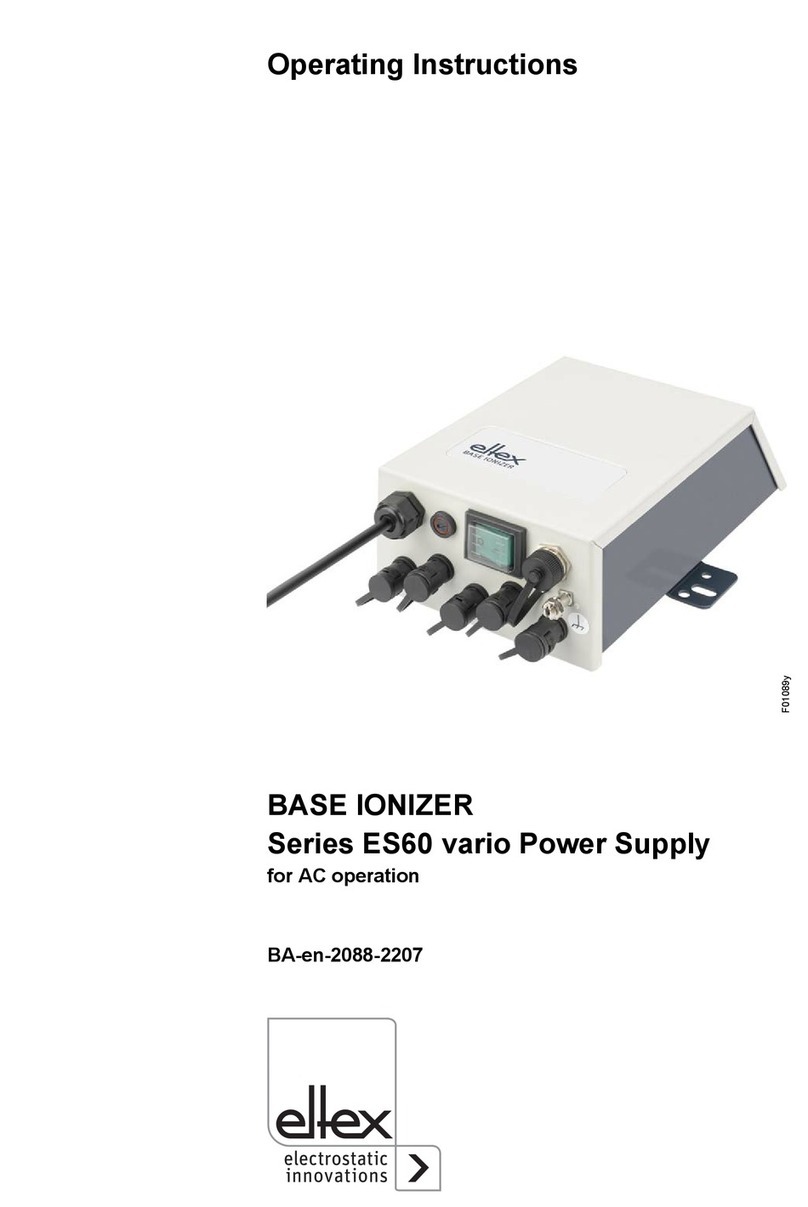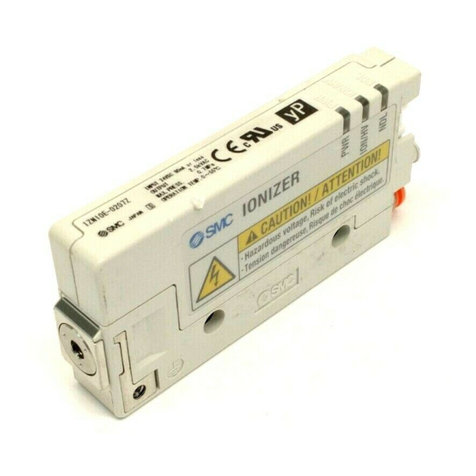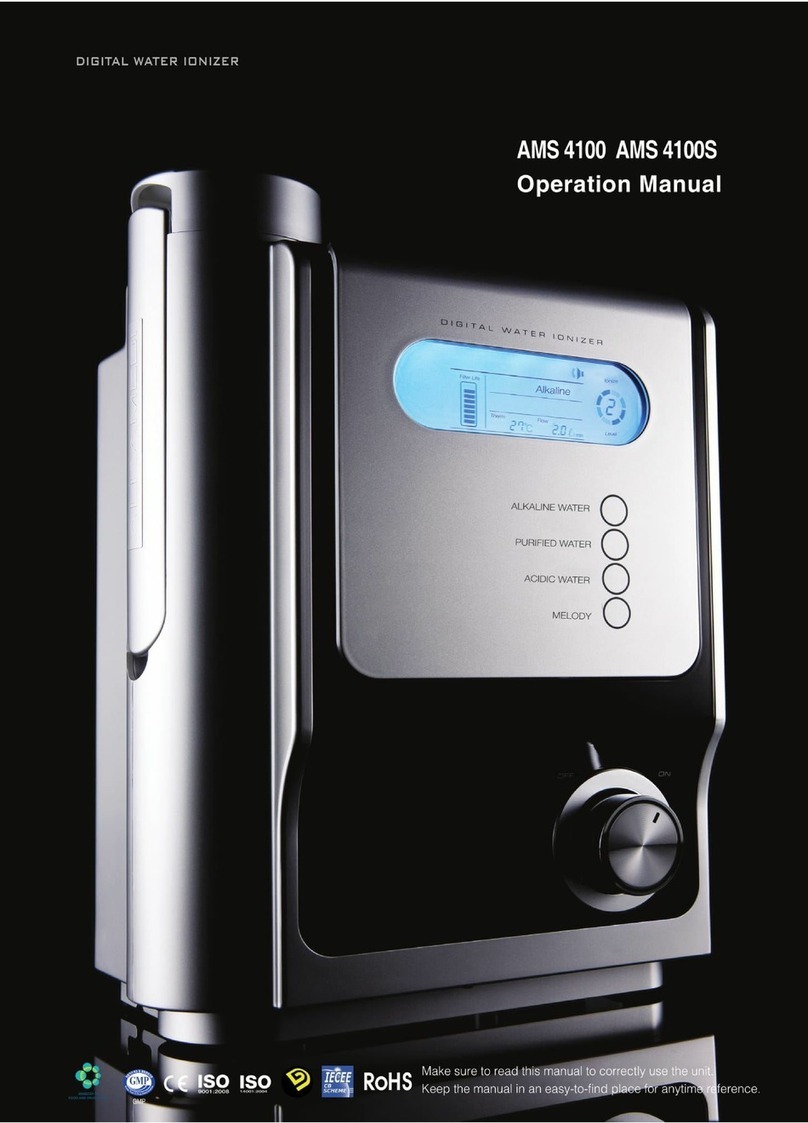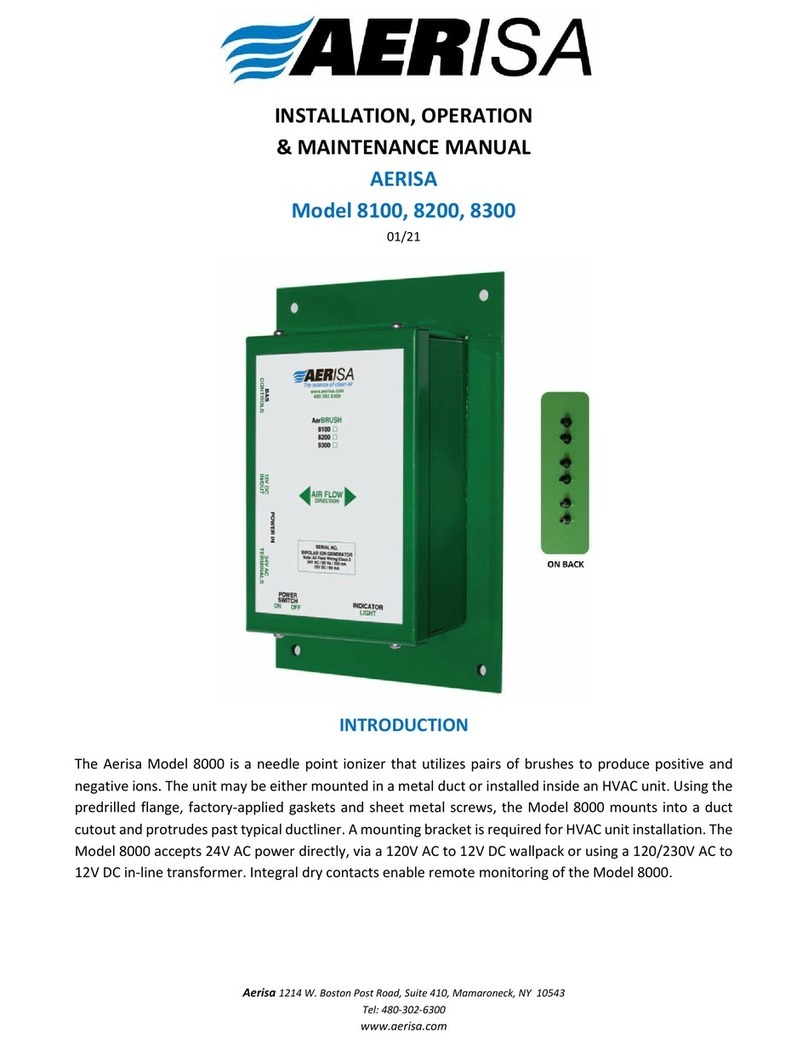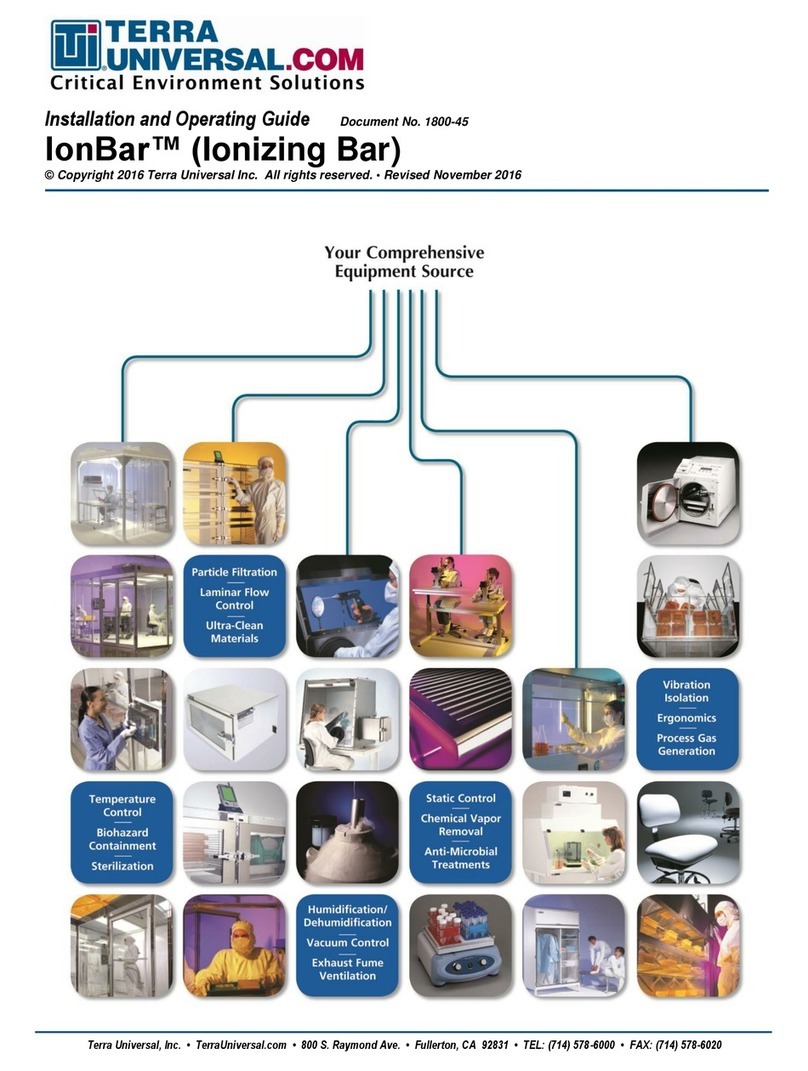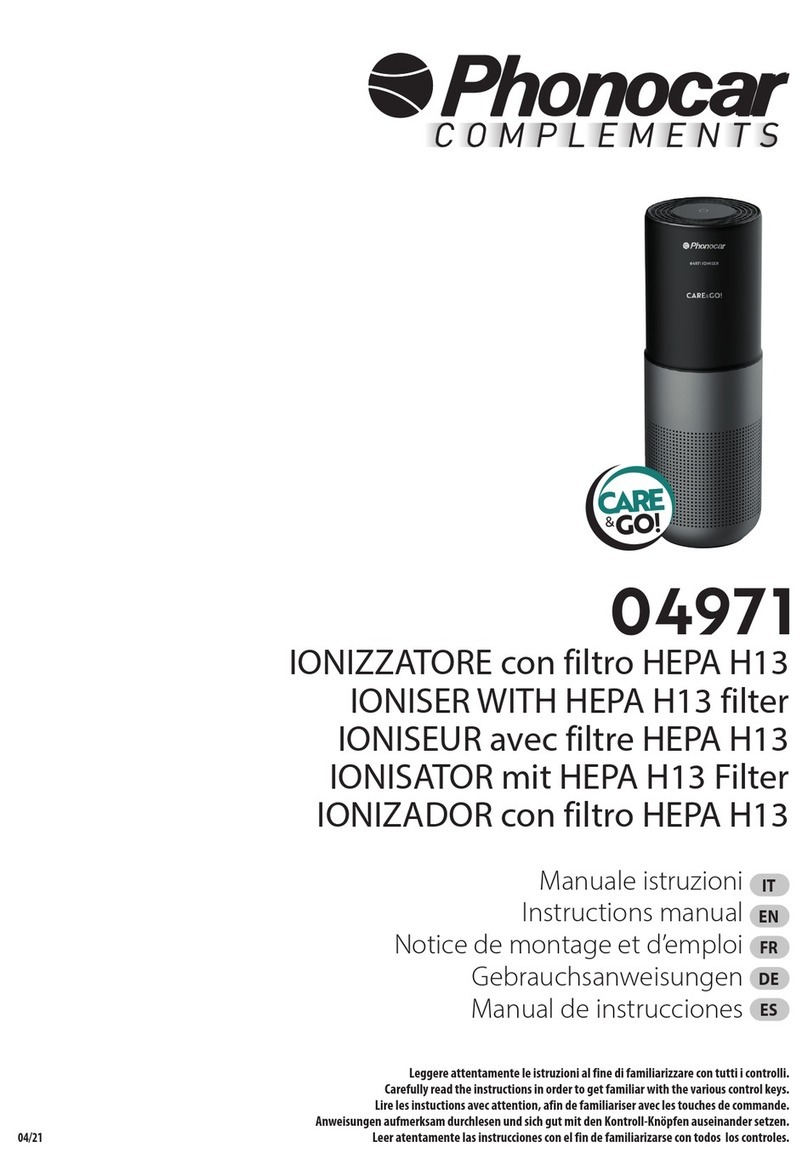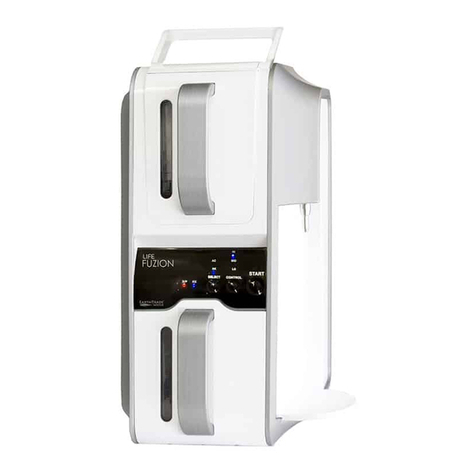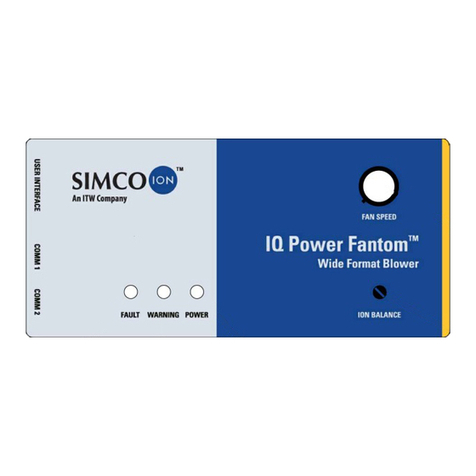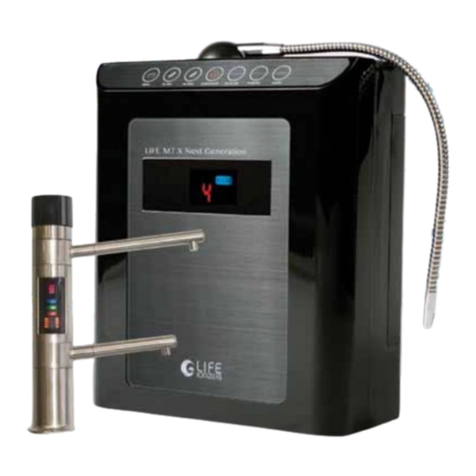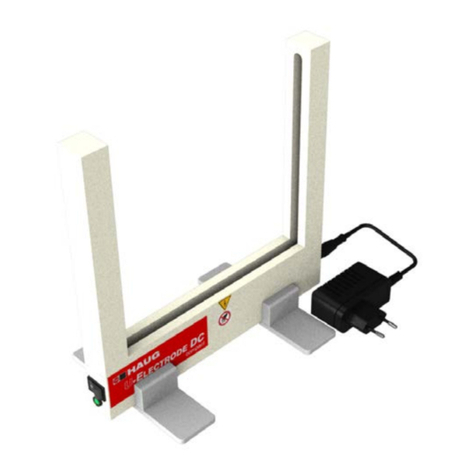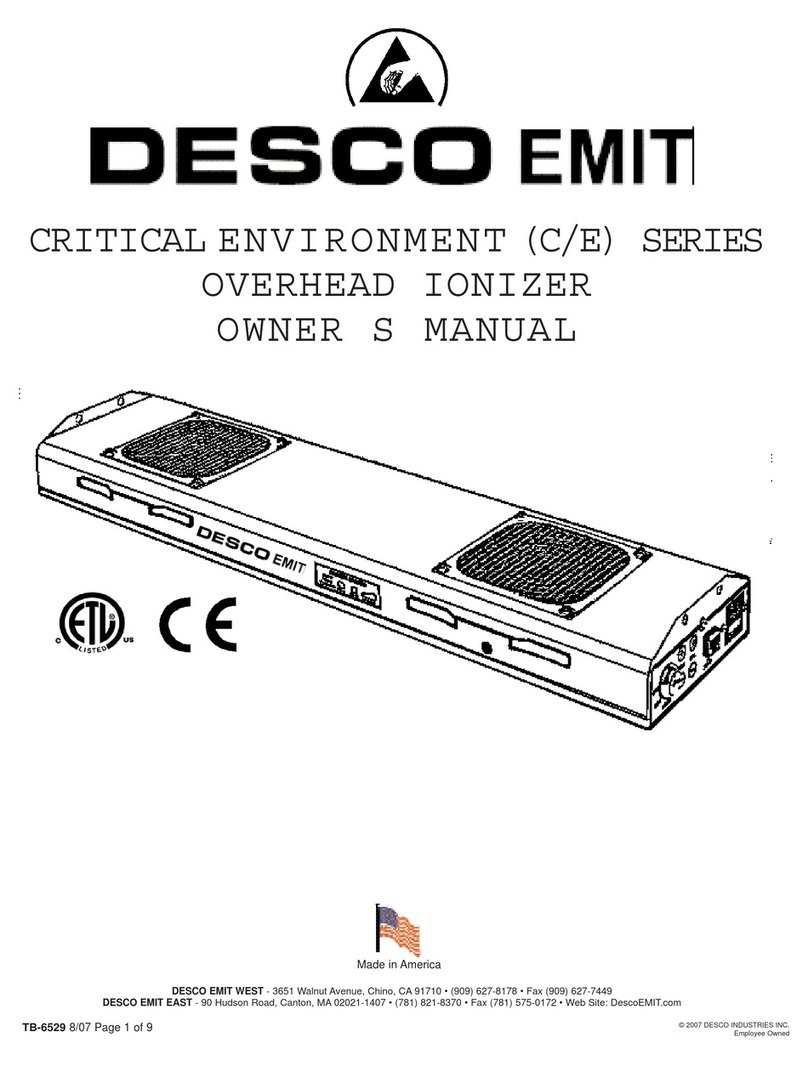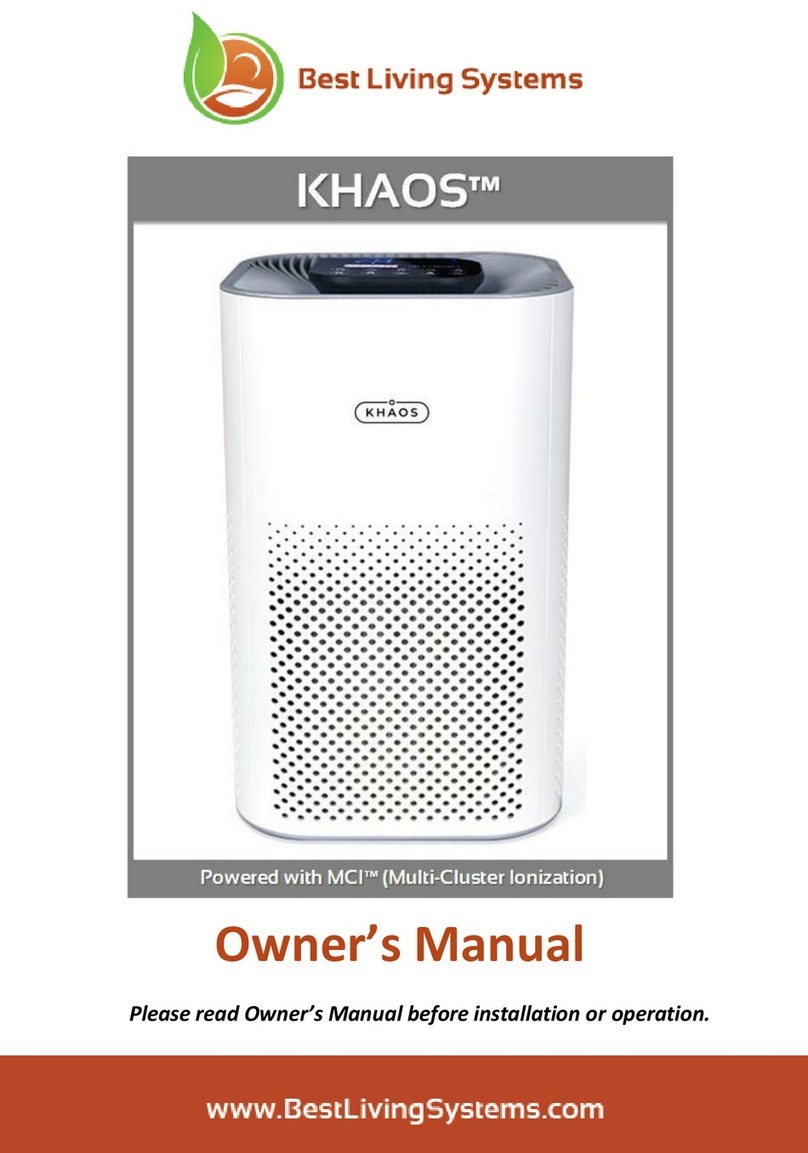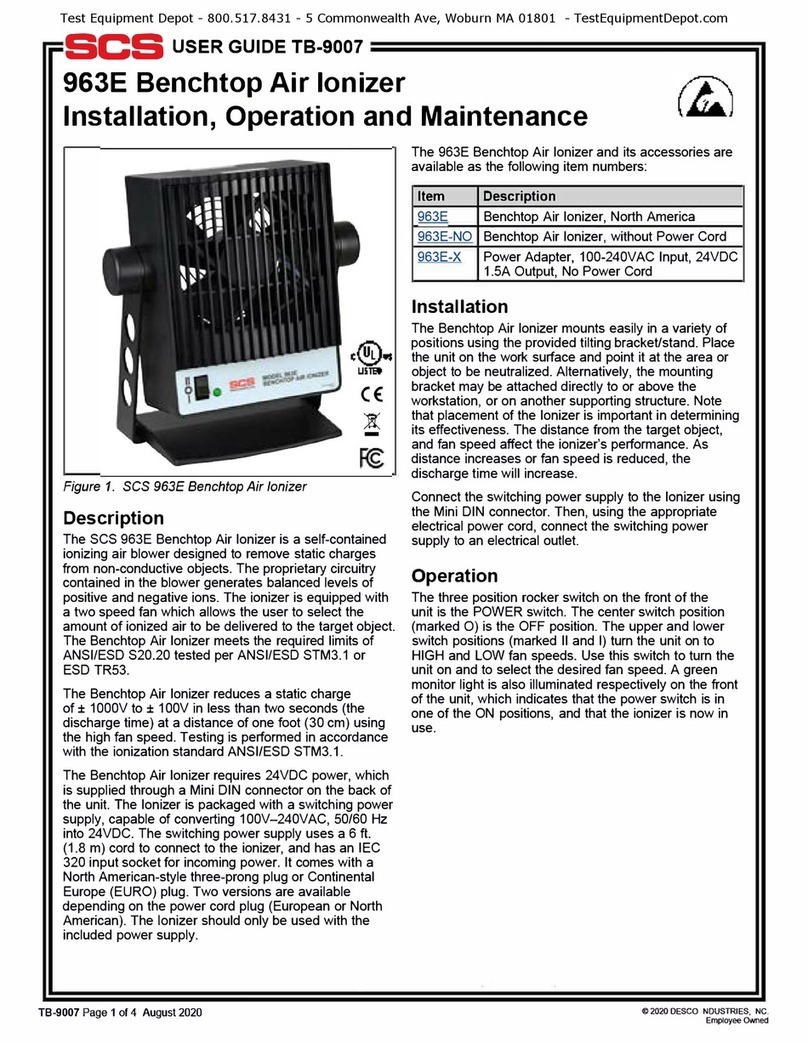
2Safety
2Safety
Only persons authorised by the operating firm are permitted to
proceed with tasks on the ionisation unit.
The installer must be an electrician and must be knowledgeable in
the field of mechanical engineering. He must be an expert in
handling and installing compressed air equipment and must wear
personal protective equipment. The installer must read the operating
manual in its entirety.
The operating and maintenance personnel must be instructed in the
handling of compressed air equipment and the resulting dangers.
Personnel must wear personal protective equipment and completely
read the operating manual.
When working on the ionisation unit, switch off the voltage and
compressed air supply and secure the unit to prevent unintentional
restart. Depressurise the compressed air system.
Dangers due to compressed air equipment
Ruptured or broken
compressed air hoses can move erratically and
can injure persons or lead to consequential accidents. Compressed
air can enter the bloodstream through the broken skin, resulting in
an embolism that can lead to death.
Always comply with the safety regulations provided by the
operating company.
Before proceeding with maintenance and/or installation tasks,
ensure the entire system is de-pressurised.
Never direct the jet of compressed air at people or yourself (for
example, to blow dirt off clothes).
Never run a compressed air hose across passageways (tripping
hazard).
Never use compressed air equipment without pressure reducer
and compressed air filter.
Never exceed the permissible operating pressure.
Always use filtered (< 20 μm), dry and oil-free compressed air.
Always use suitable hose clamps to secure compressed air
hoses.
Wearing personal protective equipment for compressed air-
operated products is mandatory (e.g., safety goggles, ear
protection, dust mask, etc.).
